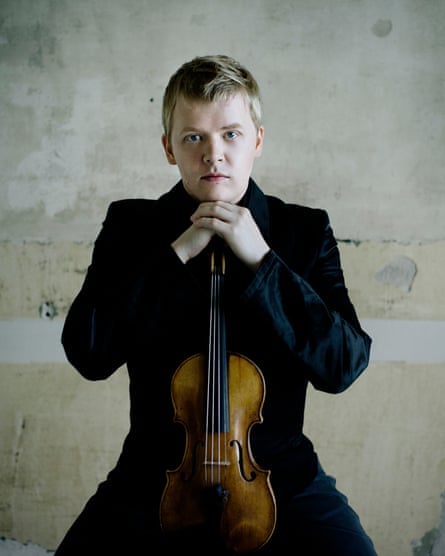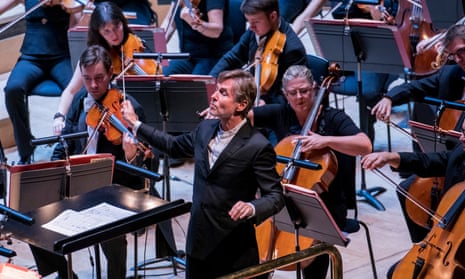Violinists who take up Daníel Bjarnason’s new concerto – and the queue to perform this strong, distinctive work starts here – have a tough act to follow. It was written for Pekka Kuusisto, and there is no other violinist quite like him. He’s an all-rounder, master of just about every playing style, the star of the 2016 Proms thanks to a new-minted Tchaikovsky concerto and an encore that had the whole Albert Hall singing a crazy Karelian ditty. Right after giving the Bjarnason’s UK premiere, he was in the foyer for a free performance of Finnish runo-song, weaving swathes of atmosphere around Ilona Korhonen’s voice with an electric violin and a loop pedal. What stories of ancient derring-do was Korhonen telling? No idea, but it was riveting.
Earlier, with the Philharmonia for the first concert of the Southbank Centre’s Nordic mini-festival, Kuusisto had been playing his trusty Strad. Yet an arresting feature of Bjarnason’s piece is how the performers, all unamplified, seem to create the aura and weight of electronic instruments – a certain thud to the bass notes, the glow of string harmonics, the crunch of feedback. It began with Kuusisto simultaneously whistling and plucking a melody, an idea taken up by the other violins. The music, highly detailed, lopes and swaggers with a wonky yet irresistible rhythmic pull, but there’s room too for passages of reflection, played by Kuusisto with achingly sweet tone. Most striking, though, were the two cadenzas, improvised episodes for the violin alone, when Kuusisto’s great, scything bow strokes took on the rhythm of a heartbeat. Future interpreters will need to be able to turn their sound from ugly to beautiful on a dime, to hold a hall rapt just plucking a little tune. And they’ll need to be able to whistle.

Iceland’s volcanic soil is fertile musical ground right now. Anna Thorvaldsdottir’s Aeriality had been a striking opener, built from huge, intense unisons that move glacially but seethe with life as a few instruments skitter in the background. Esa Pekka Salonen drew a performance of conviction from the Philharmonia – as he did with the encore, Sibelius’s Valse Triste. If only the two Sibelius symphonies, Nos 6 and 7, had been as convincing. Salonen’s swift conducting of No 6 drew out the music’s bucolic charm but there was little clarity or transparency in a work that its composer likened to “pure, cold water”. No 7 came over better but a lack of pinpoint definition blunted its edge.
Nordic Music Days continues at the Royal Festival Hall, London, until 1 October. Box office: 020-3879 9555.
The subhead of this article was amended on 29 September to correct the nationality of violinist Pekka Kuusisto, who is Finnish and not, as we had written, Icelandic

Comments (…)
Sign in or create your Guardian account to join the discussion